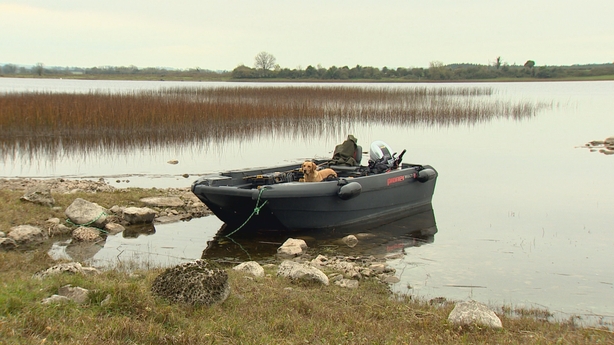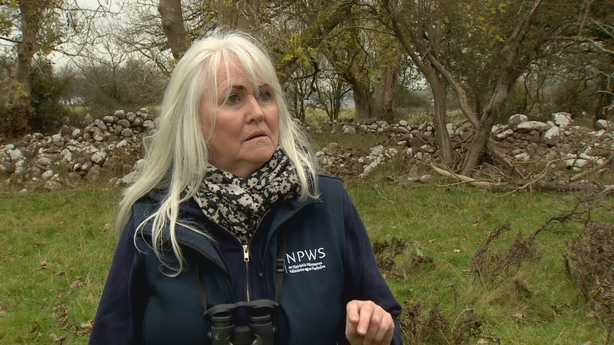The State is to buy Clawinch Island, a 50-acre hotspot for wading birds located about 500 metres from the north shore of Lough Ree.
The reason is to provide greater protection for a host of wading bird species breeding there, many of which are endangered.
It is a haven for curlew, lapwing, oystercatcher, redshank, ringed plover and snipe, as well as various duck, gull and tern species. All of which nest and breed there.
The island is also an important migratory stopping point and wintering site for many other bird species, including golden plover, whimbrel, dunlin, turnstone, and common sandpiper.
Also, both black-tailed and bar-tailed godwit are consistently spotted feeding and roosting on the island.
So, the State is not buying this island on a whim.
It is to give the National Parks and Wildlife Service (NPWS) the best chance possible of protecting what is probably Ireland's most special breeding ground for water birds and all the nature that it contains.
Lough Ree is a designated Special Protection Area and a Special Area of Conservation.
We need your consent to load this rte-player contentWe use rte-player to manage extra content that can set cookies on your device and collect data about your activity. Please review their details and accept them to load the content.Manage Preferences
A recent survey of 25 lakes all over Ireland identified Lough Ree as the most important and ecologically significant breeding ground for water birds in the country.
There is at least one white-tailed eagle roosting on the island too.
I saw it surveying all around it from a lowdown branch as I approached the island on a boat with NPWS Divisional Manager for the northwest, Cathryn Hannon, and Owen Murphy, project manager for the Breeding Waders European Investment Partnership.
The key worker who arrived with us in the boat however was a dog named Lorg, which mean search or detect in Irish.
Lorg is a three-year-old labrador-retriever conservation protection dog.
He has been specially trained to detect the scent of mink, a major predator capable of inflicting total havoc on ground-nesting wading bird communities.

"We will work an island, and if the dog indicates that there is a mink there then we will know that we have to set traps in that area to protect the birds’ nests," Mr Murphy said.
"We use live cage traps to catch the mink. But once you have set a trap, you have to visit it and check it every 24 hours, for maybe 14 or 15 days, or as long as you leave the traps down for. There is quite a bit of work involved in that.
"But if you don’t have to set a trap, because the dog has not indicated the presence of mink, then you can move that effort somewhere else. So, you can track a far larger area with the same resources and the same manpower thanks to the dog."
"When you look at a big wide-open landscape like here, mink are small little animals. They can be under a wall, under a bush, or the roots of a tree and so on.
"It is impossible for a human to check that visually. But the dog has his exceptional ability to smell. There have been umpteen occasions when he has found mink dens."

Tackling predation by mink and other mammals is not the only task here for the NPWS, however.
Many of the larger Islands on Lough Ree became uninhabited in the mid to late 1900s.
This has seen the level of agricultural activity decrease on certain islands, which means less grazing by cattle and sheep.
This has allowed more scrub to grow, which is bad thing for ground-nesting.
They need to see all around them from ground level to protect their nests and more scrublands interferes with that.
So, scrub clearance and maintenance on Clawinch Island will also be high on the agenda for the NPWS in the months and years ahead.
Ms Hannon said the islands in Lough Ree have become havens for breeding waders because changes in land use and predation on mainland areas have forced them to find areas that are undisturbed and very old.
"One of the important things for us, particularly in predator control, is that we can increase the productivity of each of these wading bird species. That's very important.
"When the productivity of these species increases, they will hopefully go on fledge and nest in other areas. We are looking here at nurseries, or wader bird breeding for the whole of the midlands region of Ireland right now," she said.

Minister for Heritage and Electoral Reform Malcolm Noonan said the State having ownership of the island ensures that it can have a plan in place for the longer-term management of this important site.
This can ensure good quality nesting habitats, and that breeding waders and other birds wintering here are free from damage caused by predators.
He thanked the current owner of the island for his willingness to see the site conserved for its ecological importance into the future.
"Under this Government, we have invested heavily in the National Parks and Wildlife Service, increasing its funding by 170%. We have created two new national parks and have invested in the strategic acquisition of key sites of ecological importance.
"We have also continued to fund and support targeted conservation projects such as the Breeding Waders EIP, a €25 million project, co-funded by the NPWS and the Department for Agriculture, Food and the Marine", he said.







